Pricing Guides & Dictionary of Makers Marks for Antiques & Collectibles

MARKS ON CHINESE EXPORT PORCELAIN - Identification reference
Join the most updated and complete collectibles research online - Learn more...
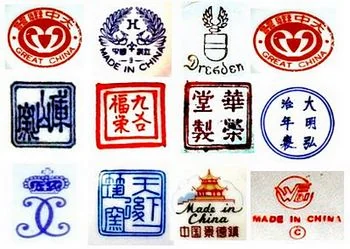 The original term of Chinese Export essentially refers to porcelains that were exported to Western markets, particularly Europe, from around 15th to the 19thC. Commonly also referred to as Chinoiserie, these were very expensive and affordable only by the very rich or noble households. This changed dramatically with the advent of German & French porcelain-making in the mid-1700s. Chinese porcelain was imported in lesser quantities and the local Meissen & Dresden and Sevres & Paris porcelain equivalents were greatly attractive to even wealthy clients that were very happy in satisfying demand while paying less.
The original term of Chinese Export essentially refers to porcelains that were exported to Western markets, particularly Europe, from around 15th to the 19thC. Commonly also referred to as Chinoiserie, these were very expensive and affordable only by the very rich or noble households. This changed dramatically with the advent of German & French porcelain-making in the mid-1700s. Chinese porcelain was imported in lesser quantities and the local Meissen & Dresden and Sevres & Paris porcelain equivalents were greatly attractive to even wealthy clients that were very happy in satisfying demand while paying less.
However, this trend of lower Chinese porcelain imports from the Orient over the last 150+ years has nowadays been reversed exponentially and to unprecedented levels. Although still of great quality, Chinese porcelain made in the last part of 20thC to the Present is still signed with old marks that are often identical to those observed on authentic antique Chinese pieces from many centuries ago.
This complicates matters when it comes to properly identifying Chinese porcelain. Obviously, experience is the key, but it also important to realize that the vast majority of items marked with old Chinese symbols are nonetheless recent reproductions. The chance that a flea-market find will turn out to be the proverbial Ming vase is just bogus and so unlikely, that it is more probable to be hit by thunder than discover such a treasure [except when it actually does happen, I guess; then it is truly like being hit by thunder... Just don't count on it!]
Another category of Chinese porcelain marks that are somewhat easier to decipher are those that resemble older European makers, especially on items in Western styles. Apart from some rare but blatantly bold attempts to deceive by marking these wares with identical copies of German or French or British backstamps, a vast proportion of these reproductions bear marks that differ in some subtle ways from the original. A trained eye can distinguish these more often than not and mistakes can be avoided.
For an in-depth article related to this topic, please see: Chinese export porcelain
Unlock the true value of your collection with our comprehensive research guides from identifying makers' marks to appraising all kinds of antiques and collectibles, including items featured in this article.
Our up-to-date information will give you an accurate understanding of your items' worth. Don't miss out on this valuable resource - visit our research tools today!
In addition to some examples shown below on this page, you can also search our price guide for your own treasures.
Examples of related items from our Price Guides
-
 GRP: 28 BOOKS ON CHINESE EXPORT CERAMICS
[more like this]
GRP: 28 BOOKS ON CHINESE EXPORT CERAMICS
[more like this]
-
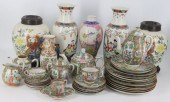 COLLECTION OF CHINESE EXPORT PORCELAINS.
[more like this]
COLLECTION OF CHINESE EXPORT PORCELAINS.
[more like this]
-
![[CHINESE JADE]
A group of ref](/images/chinese-jade-a-group-of--34d513-medium.jpg) [CHINESE JADE]
A group of reference boo
[more like this]
[CHINESE JADE]
A group of reference boo
[more like this]
-
 LARGE GROUPING OF CHINESE EXPORT PORCELA
[more like this]
LARGE GROUPING OF CHINESE EXPORT PORCELA
[more like this]
-
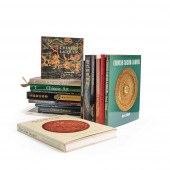 WORKS OF ART REFERENCE BOOK COLLECTION ?
[more like this]
WORKS OF ART REFERENCE BOOK COLLECTION ?
[more like this]
-
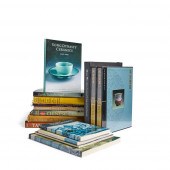 CERAMIC REFERENCE BOOK COLLECTION ??????
[more like this]
CERAMIC REFERENCE BOOK COLLECTION ??????
[more like this]
-
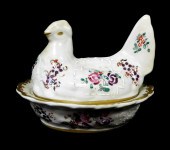 PORCELAIN, CHINESE EXPORT AND SIMILAR, F
[more like this]
PORCELAIN, CHINESE EXPORT AND SIMILAR, F
[more like this]
-
 Group of Eighteen Pieces of Oriental Por
[more like this]
Group of Eighteen Pieces of Oriental Por
[more like this]
-
 4 CHINESE EXPORT PORCELAIN ARMORIAL PLAT
[more like this]
4 CHINESE EXPORT PORCELAIN ARMORIAL PLAT
[more like this]
-
 COLLECTION OF CHINESE EXPORT PORCELAINS.
[more like this]
COLLECTION OF CHINESE EXPORT PORCELAINS.
[more like this]
-
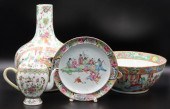 COLLECTION OF CHINESE EXPORT PORCELAINS.
[more like this]
COLLECTION OF CHINESE EXPORT PORCELAINS.
[more like this]
-
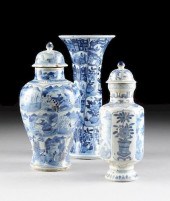 A GROUP OF THREE CHINESE EXPORT BLUE AND
[more like this]
A GROUP OF THREE CHINESE EXPORT BLUE AND
[more like this]
There are many more auction results available to our members...





